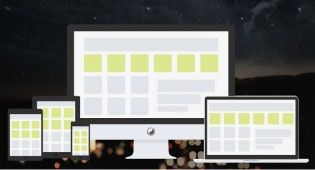Publicity Pointers: How to Write a Press Release

YNOT EUROPE – In a difficult economy, everyone wants maximum attention for their business for minimal investment. Catching the eye of the media can provide a huge boost in a company’s profile, because the media catches the eyes of potential customers.
But with so many companies jockeying for the so-called “free advertising” represented by news and feature stories in the press, how does a company go about standing out from the crowd?
Press releases are one answer. An effective press release may catch a reporter’s or editor’s attention, often leading to at least a mention of your product or service in a way to which readers respond. Agencies and public relations specialists exist to help businesses expand their promotional reach by acting as intermediaries between the media and the company, but not everyone can afford the services of a professional public relations representative.
The good news is, press releases — or “PRs” as they often are called — can be a do-it-yourself venture. Here are a few basic guidelines to help even the “little guys” write a press release.
The basic components of a PR include
- Headline.
- Dateline and lead.
- Body.
- Contact information.
Optional components include a “tagline” or summary and a “boilerplate” statement.
The headline
The headline is the PRs title, and it should be short, compelling and tailored to the market you hope to reach.
Good headlines
- Provide information, not a sales pitch or marketing lingo.
- Immediately attract a reader’s attention.
- Make the reader want to learn more.
In most cases, it’s better to be straightforward with headlines and omit hyperbole: “Company XYZ Offers $100 Sign-Up Bonus,” for example, instead of “We’re Rockin’ the House with Best-in-the-Industry Payouts.” From a writer’s or editor’s perspective, the latter is vague and annoying. The former tells the writer or editor up-front exactly what it is you’re offering and why their readers may care. Remember: Writers and editors are there to serve the needs and desires of their readers, not to help you promote your business. Your PR is more likely to be read if your headline indicates the news that follows may be useful for readers.
Dateline and lead
The dateline is simply where your company is located. This can be important if your news is about a local even, but it’s equally important in the Internet Age because many websites segregate their content by geographical area. If a writer or editor is interested in your content, he or she has ways of discovering where your business is located, if that information is important, but why not make the media’s job as easy as possible? Members of the press are busy, too, especially in an economy that has not been kind to the publishing industry.
Format a dateline thusly: CITY, State and/or Country, Month, Day, Year.
The “lead” is the first paragraph, so called because it gives the most important, most fundamental information. Include the who, what, where, when and why related to whatever you’re promoting in the PR, and don’t dilly-dally about it. A short lead paragraph, giving just the basic information will allow the reader to see whether the story is right for his or her publication, as well as how timely the message may be. If you’re promoting an event or special deal that takes place on certain dates, be sure to include the dates right up front. That way, the person who receives the PR will know there’s a time limit on the value of the news. Reporters and editors often only have time to scan the first paragraph of a PR, so putting off important details for later in the document is a mistake.
It’s best to keep the lead direct and on-point, foregoing cuteness, back story and hyperbole. You have perhaps 10-15 seconds to catch an editor or reporter’s attention, so use your lead paragraph wisely. In addition, never assume the editor or reporter read the headline. Ensure the critical data is incorporated in the lead paragraph, even if you must re-state something noted in the headline.
Body
The body of a PR — everything between the lead and the ending — is the place to add supplemental details and information, quotations and anything else you think the media may want to know. The body is the place to get “cute,” have a little fun if you’re so inclined, and add the kinds of information that will deepen the reporter’s or editor’s interest in your story. But remember: You don’t have a lot of space. The most appreciated PRs — at least from a reporter’s or editor’s perspective — are no longer than one page. What makes this event, promotion, person or whatever you’re hawking unusual or compelling? That kind of background “stuff” goes in the body.
The final paragraph is a special part of the body copy. Following traditional “inverted pyramid” style wherein information gradually decreases in importance the further down the page one reads, the closing paragraph contains the least vital information of all. It may comprise a summary of everything that’s gone before, or it might contain links to more information on the web. Often, a final paragraph will state something akin to “For more information, visit [website address] or contact PR Person at [email] or [phone].”
Your PR will be easier to read and digest if you keep sentences and paragraphs short. Try to limit paragraphs to three or four lines, regardless the number of sentences. Remember the old advertising adage: “White space sells.” That advice is as true for printed copy as for page design. White space gives the reader’s eyes a break, especially in online communications.
Contact information
Never, ever send a PR without providing the recipient a way to contact you. Omitting contact information almost guarantees the PR will be deleted or thrown away without attention. After all, would you want to receive a tantalizing note from someone who gives you no way to find out more? If you email your PR, make sure you do so from an address you check frequently.
Contact information may be included above the headline or below the body copy. Include a contact name, company name, website address, email address and, optionally, phone number or instant message address.
Optional parts
Taglines and boilerplate sections are not necessary, although many PRs include them.
A tagline may be a brief summary of what the PR discusses, or it may be a single sentence that calls special attention to some particularly appealing bit buried in the body copy. Taglines usually appear just below the headline and just above the body copy.
Boilerplate content is a block of copy that typically appears on all company correspondence without changing in any significant way. Often, boilerplate copy comprises an “About the Company” statement, but it also may include brief biographies of important individuals or details about services and products. If your company is subject to legal requirements about reporting financial information, you also may want to include a “safe harbor” statement.
These are just the basics for generating a press release that’s as useful for your business as it is for the media. If you have questions, leave them in the comments and we’ll do our best to answer.
Comments are closed.





